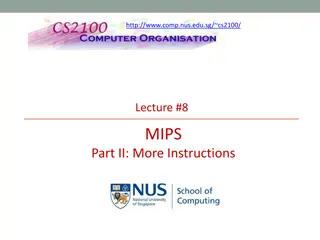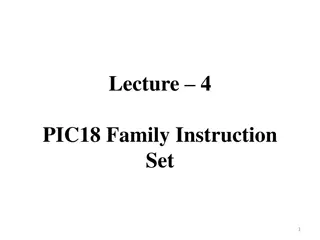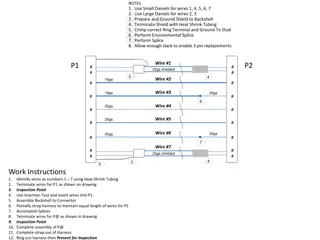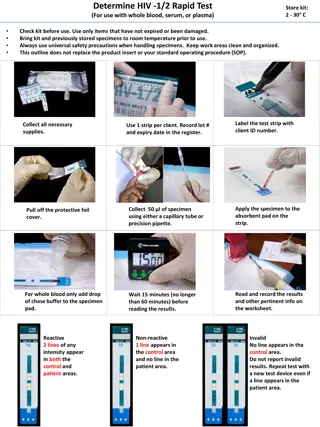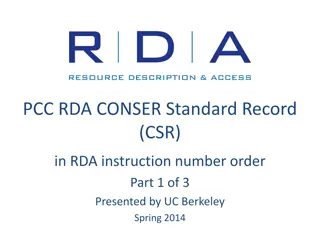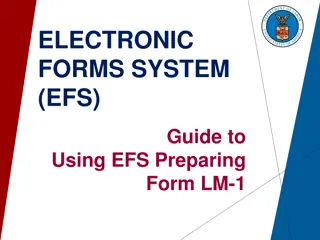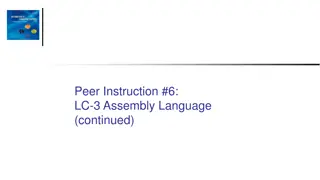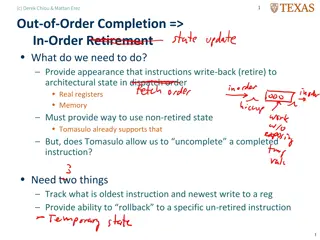
Mastering Origami: Step-by-Step Guide for Beginners
Learn how to create beautiful origami pieces with this detailed step-by-step guide. From folding the paper along diagonals to creating intricate shapes, follow these instructions to master the art of origami.
Download Presentation

Please find below an Image/Link to download the presentation.
The content on the website is provided AS IS for your information and personal use only. It may not be sold, licensed, or shared on other websites without obtaining consent from the author. If you encounter any issues during the download, it is possible that the publisher has removed the file from their server.
You are allowed to download the files provided on this website for personal or commercial use, subject to the condition that they are used lawfully. All files are the property of their respective owners.
The content on the website is provided AS IS for your information and personal use only. It may not be sold, licensed, or shared on other websites without obtaining consent from the author.
E N D
Presentation Transcript
Step 1 Fold the origami paper along a diagonal and then open it back up. Position your paper so that the diagonal crease starts at the bottom left corner and slopes up to the top right corner, as shown.
Step 2 Fold the paper in half by bringing the top edge of the paper down to meet the bottom edge of the paper.
Step 3 Keep the paper folded in half from step 2. Fold the right edge of the paper over to meet the left edge. This should create a square that is one-quarter of the size of your original paper. The main crease should be on the right edge of the paper, with the open edges of the paper on the left and bottom. You should not see any fold impressions on the front of this smaller square you ve created (but there will be one diagonal fold impression on the back).
Step 4 Keep the paper folded from step 3. Fold along the diagonal to create a triangle. To do this, take the top left corner and fold it down to meet the bottom right corner.
Step 5 Keep the paper folded from step 4. Take the top vertex and fold down so that a small triangle with two sides of equal length is created at the top (students triangles will be of varying sizes).
Step 6 Completely unfold your paper back to its original size and shape. Orient the paper as shown and make sure you can see all of the creases, indicated by the dashed lines. You should see: a smaller square, formed by the creases, in the center of the larger square paper; two diagonal creases across the square paper; and a horizontal and vertical crease dividing the square paper into quarters.
Step 7 Fold the top edge down so that a new crease along the top side of the small inside square is created and now extends across the entire length of the paper, from left to right. Unfold your paper and then repeat this step for the right, bottom and left sides of the small inside square.
Step 8 Unfold your square and make sure you have all of the creases shown. You should see that all the sides of the small interior square have now been extended to meet the edges of the paper.
Step 9 With your paper still unfolded, use two different colored pencils to label the two creases shown colored in Fig. 9. The b leg should be a segment of the uppermost horizontal crease, starting at the left edge of the paper and extending to the rightmost vertical crease. The a leg should be a segment of the rightmost vertical crease, starting at the top of the paper and extending down to meet leg b.
Step 10 Take the top left corner of your paper and fold it back to create what will be the hypotenuse, leg c, which will connect legs a and b. It may be helpful to flip your paper over so you can still fold down for this step.
Step 11 Locate the rightmost point of the lowest horizontal crease, labeled H2 in Fig. 11. Locate the top point of the rightmost vertical crease, labeled V1 in Fig. 11. Repeat what you did in step 10 so you create a hypotenuse that connects the point H2 to the point V1.
Step 12 Locate the bottom point of the leftmost vertical crease, labeled V2 in Fig. 12. Repeat what you did in steps 10 and 11, so you create a hypotenuse that connects the point H2 to the point V2. Repeat this one more time to connect the point V2 to the point H1.
Step 13 Unfold your paper completely. Use a third colored pencil to label the hypotenuse c, which connects legs a and b, and label it c. Finally, cut or gently tear along the side labeled a. Cut or tear only the length of leg a, no farther.
Step 14 Now that you ve created your Proofigami, and you can use it to prove the Pythagorean Theorem! First, let s label two additional segments with the lengths of a and b, as shown in Fig. 14. (You can measure to convince yourself that the segments of length a are equal and the segments of length b are equal.)
Step 15 We are going to fold back four triangles of equal area. These four triangles are numbered in Fig. 15, and all have side lengths a, b and c, so they must be congruent (exactly the same). Fold back triangles 1 and 2, and then fold back triangles 3 and 4. By eliminating triangles 1, 2, 3 and 4, we are left with two squares of area a2and b2, which is a total area of a2+ b2.
Step 16 To prove that this a2+ b2is equal to c2, we should be able to start with our full sheet of paper, again eliminate four triangles of sides a, b and c, and be left with a square of side length c (and area of c2). Unfold back to your original square paper. Fold back the four triangles, labeled 1, 4, 5 and 6, shown in Fig. 16. These are congruent to the four triangles you folded back in steps 10-12. The remaining area is a square with side lengths equal to c and area equal to c2.

